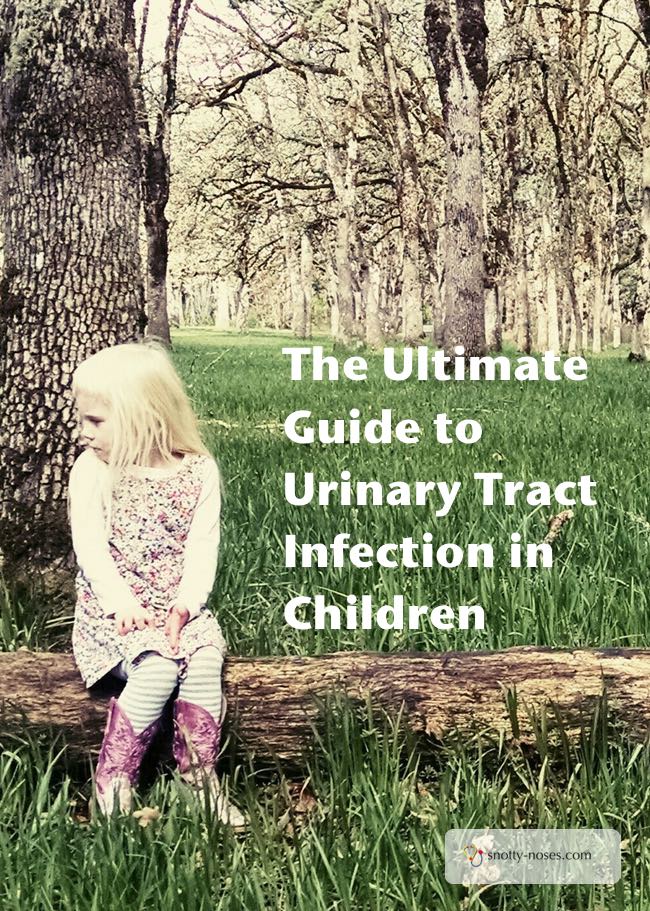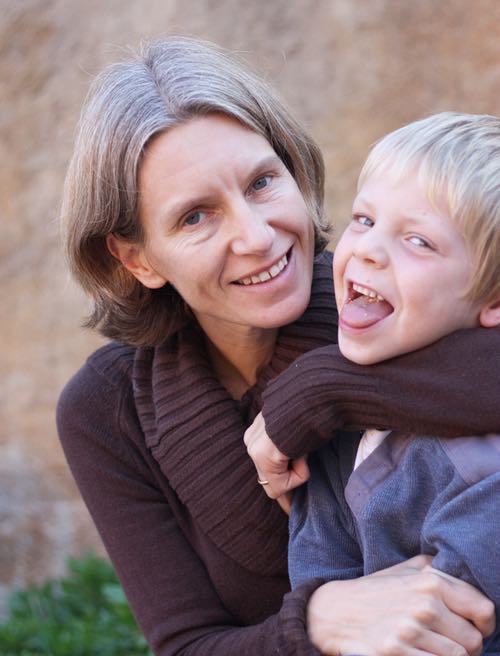Avoiding infections is an important part of your kids health. A Urinary Tract Infection (UTI) is an infection that occurs in the urinary tract. That means anywhere from your kidneys to the end of your urethra (the bit where the wee comes out). Normally the infection is in the bladder (also known as cystitis). UTIs are common in children, especially those who have constipation. Drinking lots of water and good personal hygiene will help avoid UTIs.

Causes of Urinary Tract Infections in Children.
UTIs are caused by bugs tracking up the urethra (bit where the wee comes out) and growing in the bladder. Normally the bladder doesn’t have any bacteria in it. The bottom end of the urethra is close to the anus (where the poo comes out.) Needless to say, poo is not sterile. It has lots of bacteria in it. (That is normal, it's supposed to have some bacteria in it, known as 'commencals' or good bacteria.) Sometimes the bacteria spreads from the poo, or surrounding area and goes up the urethra into the bladder, causing an infection, a 'urinary tract infection' or 'UTI', commonly known as a 'wee infection'.
Due to anatomy, UTIs are much less common in boys. The bacteria needs to track all the way up the the inside of the penis and into the bladder. In girls the bladder is much closer to the opening of the urethra.
Higher or Lower UTI
A UTI can occur higher up in the urinary tract. A kidney infection is a 'higher urinary tract infection', know as 'pyelonephritis’. A bladder infection is a 'lower urinary tract infection' or 'cystitis'.
An anatomical abnormality will also predispose children to having a urinary tract infection, but they are still common in children who have entirely normal anatomy.
Symptoms of Urinary Tract Infections in Children.
Symptoms of a UTI vary with the age. A young child who can’t talk may have a temperature, vomiting, lethargy, irritability and poor feeding.
Older children (generally those over 3) may also show signs of being in pain when doing a wee ('dysuria'), they may go to the toilet a lot ('frequency'). If they are old enough they can tell you that it hurts. You may also notice blood in their urine ('haematuria'). Other symptoms include tummy pain, offensive or cloudy urine.
Symptoms of UTI in Young Children
- Temperature
- Vomiting
- Lethargy
- Irritability
- Poor Feeding
Symptoms of UTI in Older Children
- Dysuria, pain when going for a wee
- Frequency, doing lots of wees
- Haematuria, blood in the urine
- Fever
- Tummy ache
- Vomiting
Diagnosis of urinary tract infection in Children
If your doctor is worried that your child has a urinary tract infection, they will want a urine sample. This is really easy with older children, they wee into a sterile pot.
With younger children in nappies, it is much more difficult. The best sample to get is called a 'clean catch' and this involves sitting around with your child's nappy off, hoping to catch a drop of urine in a pot. There are other methods, such as a special pad or bag that can be put into their nappy.
If your doctor is really worried, they might need to put a needle into the baby's bladder and get some urine. (This is not as bad as it sounds.)
Treatment of Urinary Tract Infections in Children
Urinary tract infections are treated with antibiotics. The antibiotics may be given by mouth or by a drip depending on how severe the illness is. The majority will clear up with antibiotics in a couple of days. Some children will also need follow up imaging such as ultrasounds.
Avoiding Urinary Tract Infections in Children
Maintaining good personal hygiene (clean genital area) is important. Girls should wipe from 'front to back' after going to the toilet. This is so that bacteria from around the anus is not brought forwards towards the urethra.
Avoiding constipation can help to reduce UTIs
Drinking sufficient amounts of water and making sure you go do a wee when you need to (i.e. not holding onto it) can also help prevent urinary tract infections.
- Good personal hygiene
- Wiping from front to back
- Avoiding constipation
- Drinking enough water
- Going to the toilet regularly (not holding onto your wee)
Urinary tract infections in children are relatively common. Normally they are treated with oral antibiotics. You can avoid most UTIs by maintaining good personal hygiene, avoiding constipation and drinking enough water.


 Feeding Toddlers.
Feeding Toddlers. Would you like your kids to eat more healthily? Check out the book!
Would you like your kids to eat more healthily? Check out the book!